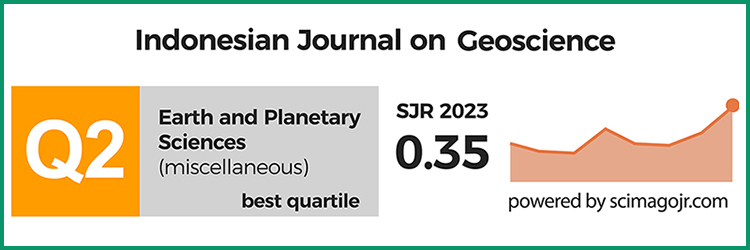Magma Evolution of Ngebel Volcano, Ponorogo, East Java, Indonesia
DOI:
https://doi.org/10.17014/ijog.10.1.51-62Abstract
The magma evolution of Ngebel Volcano, both temporally and spatially, is represented by the characteristics of its lava. Ngebel Volcano, located in East Java, is a Quaternary andesitic stratovolcano. This volcano is part of the Wilis Volcanic Complex. The volcanism stage of Ngebel Volcanic Complex can be divided into the Jeding with andesitic basalt (SiO2 49 - 59%), pyroxene andesite Kemlandingan (SiO2 49 - 59%), Manyutan with hornblende andesite (SiO2 49 - 59%), and Ngebel with dacite (SiO2: 49 - 59%). The variation of major elements combined with petrographic features such as plagioclase, pyroxene, hornblende, quartz, and opaque minerals from basaltic andesite to dacite is interesting. The minerals show that the magma differentiation process of Ngebel Volcanic Complex is the results of fractional crystallization of magma. The purpose of this study is to determine the evolution of magma from volcanic rocks of which stratigraphic positions have been determined. The analytical methodology used is petrographic and geochemical analysis. Detailed temporal evolution shows that magma from the Ngebel Volcanic Complex underwent a differentiation process that changed the magma composition from mafic to more felsic.
Downloads
Published
08-01-2023
How to Cite
Yudiantoro, D. F., Ratnaningsih, D. R., Pratiknyo, P., Mahreni, M., Sayudi, D. S., Haty, I. P., … Sampurno, D. G. (2023). Magma Evolution of Ngebel Volcano, Ponorogo, East Java, Indonesia. Indonesian Journal on Geoscience, 10(1), 51–62. https://doi.org/10.17014/ijog.10.1.51-62
Issue
Section
Articles



















